Cindy Stevens traces her family line back to the early pioneer days on Western Australia’s wheatbelt. Now she and her husband, Simon Wallwork, are pioneers of a different kind: in adapting to climate change.
“The change in Liberal leader [to Scott Morrison] was probably a major tipping point for us, because we could see there was going to be no leadership from the government on a federal level,” she says at her farm near Corrigin, 230km east of Perth.
“We could see that something had to be done,” she says.
The couple – who met studying agricultural science at university – raise cattle, sheep and grow barley, canola, wheat and lupins on their 3,700 hectare property Julcintra.
Sign up here to get the Australia’s Modern Outback newsletter emailed direct to you
They say they felt frustrated by the “suppressed” climate change conversations in the conservative rural areas, and the lack of political leadership, as the need to act becomes more urgent.
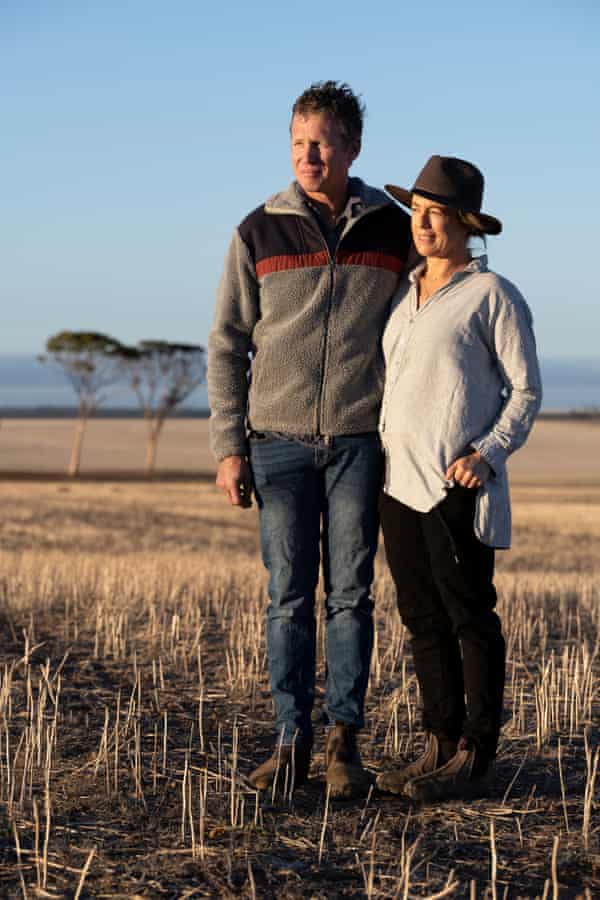
“We’re living and breathing climate change now … we’ve lost at least 20% of our growing season rainfall and, ironically, we’re having more severe frost events,” Simon says, reflecting trends seen across the wheatbelt. “Our temperatures have risen by about 1.2 degrees.”
And so what began as a callout on social media has developed into AgZero2030: a movement of WA farmers eager to influence climate action and to lead by example by making their own properties carbon neutral within the decade.
“The 2030 target is really about trying to limit warming to 1.5 degrees … the consensus was that 2050 is too far away,” says Simon, who chairs AgZero2030. “I think we won’t be far off. And tree planting is the easiest way of getting there.”
The AgZero2030 movement is starting small, with about 30 volunteers and 800 subscribers on social media. But its affiliation with Farmers for Climate Action– a wider, national movement of farmers, graziers and agriculturalists founded in 2016 – brings it a network of more than 5,000 members.
Other agricultural groups are joining in too: the major agricultural lobby group the National Farmers’ Federation adopted a zero 2050 target last year. Meat and Livestock Australia is aiming for 2030.
Adaptation
With agriculture long been cited as a key culprit in rising carbon emissions, farmers in the outback are joining a global movement hoping to minimise their own footprint and help to remove atmospheric carbon dioxide into natural carbon sinks like soils and woody plants – known as carbon sequestration.
According to the Australian Greenhouse Emissions Information System, agriculture reduced its emissions intensity by 63% in 2018 on 1990 levels. But the sector still accounts for some 14% of Australia’s net emissions.
Simon and Cindy are already adapting. They’ve already planted a range of salt-tolerant natives including saltbush to tackle creeping salinity; like most farmers, they have adopted a “no-till” farming system to minimise erosion and retain moisture through soil cover, and used strategic soil inversion to improve moisture infiltration.
In 2019 the family business asked their local agriculture consultant – who had previously audited the property for cashflow, outstanding debts and yield – to add net carbon emissions to the bottom line of his annual reports.
The resulting audit showed the property is responsible for 1,500 tonnes of CO2-equivalent emissions a year – about as much as 214 average households.
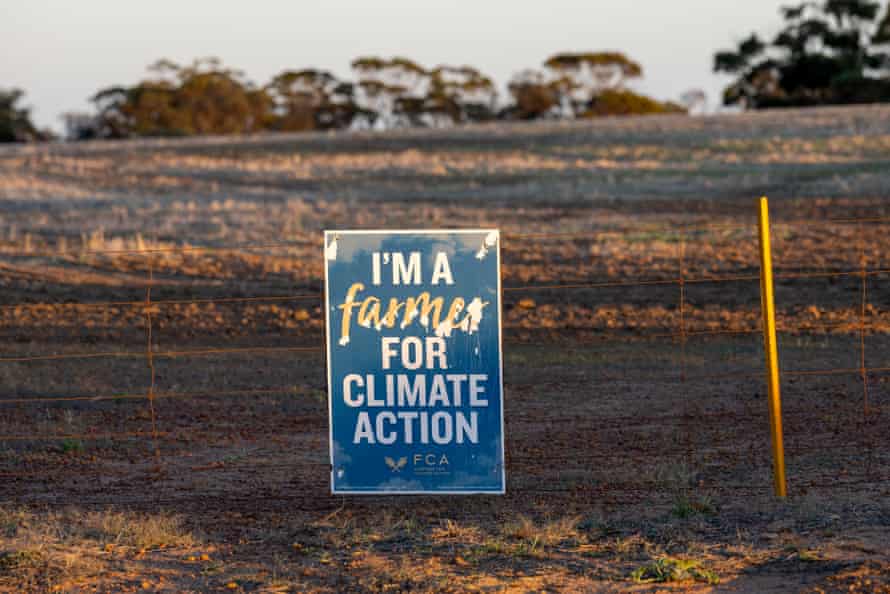
It showed that in 2020 Julcintra’s largest emission source was nitrates from artificial fertilisers, followed by enteric (livestock) methane and farm equipment diesel exhaust. Their livestock was the biggest contributor.
To achieve carbon neutrality, the family has three choices: plant about 200 hectares of trees; find the equivalent reductions and/or abatements through carbon sequestration; or offset the emissions by buying carbon credits – at a cost of about $25,000 a year.
They are making changes, Simon says: “We are already implementing multipurpose perennials [known as ‘shade/shelter/fodder’] … We’ve moved away from burning stubble. We are implementing more efficient fertiliser use and investigating soil biology.”
They have other ideas, too. For instance, innovative research into feed supplements, particularly seaweed, has the potential to cut methane emissions from cattle by more than 80%. But Cindy says supplying the supplement daily to the animals across their sprawling property isn’t practical at this stage. “We’ll do the low-hanging fruit, the easier stuff first, and then the more difficult methane emissions … later on.”
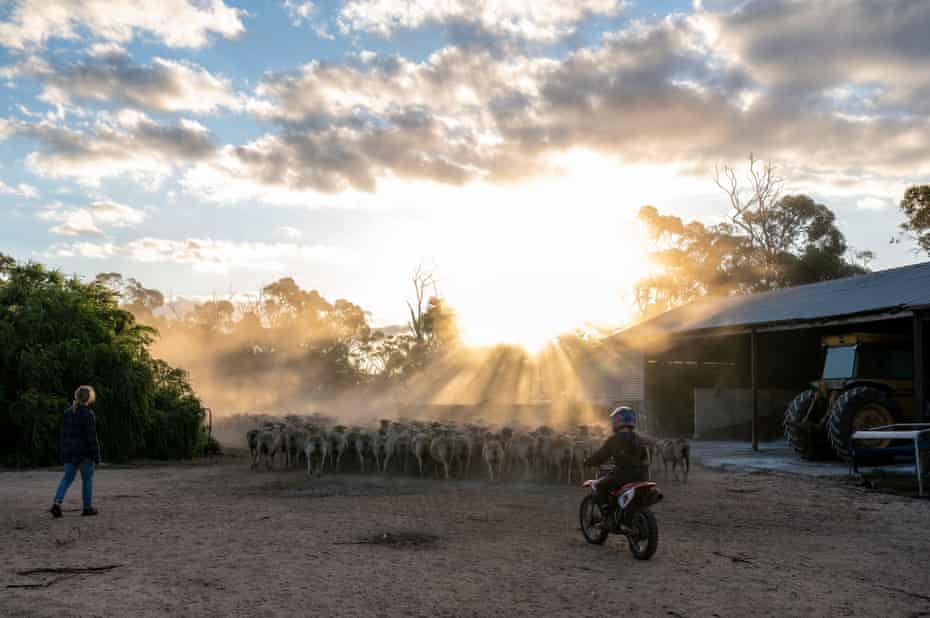
With the cost of adjustment comes benefits. The EU sustainable canola market for biofuels, for example, carries a $5-a-tonne premium if farmers can prove greenhouse gas emissions savings of 50% to 60% compared with petrochemical fuels. And plugging emissions – effectively “energy leaks” out of the farm, Simon says – will lead to greater productivity, particularly through healthier livestock.
There are also future revenue streams waiting if the family decides to enter the carbon market: carbon-intensive businesses, such as the mining sector, are increasingly looking to landholders to plant trees or to enrich their soils with organic matter to offset their emissions.
“My preference at this stage is we do the [abatement] project ourselves with some assistance, and retain the carbon credits, which means we can become carbon neutral very soon,” Simon says. “And the credits would become an asset in succession.”
Calculating the cost
Not everyone is on board. For John Hassell, who runs a 5,000 acre mixed farming business near Pingelly, west of Corrigin, as well as a second property further north, with his wife, Michelle, the cost of abatement measures is a major sticking point.
Hassell, who is the new president of the WA Farmers Federation and a former Nationals candidate, argues that farmers are “actually the good guys” and have been carrying out carbon reduction for decades.
“The problem we [WA Farmers] have with the National Farmers’ Federation aspiration – and probably also with AgZero2030 – is that there is no clear definition about what [carbon reduction] means,” he says.

“Does it mean it’s a community aspiration as a whole? So that farmers can be used to sequester carbon while somebody else emits a whole lot more? Does it mean that we’re going to get paid for it? Does it mean that any of the good works that we’ve done over the last 20 or 30 years … will get any credit whatsoever?”
In the absence of an agreed, sector-wide carbon “calculator”, the AgZero2030 group is working with Landcare to run carbon accounting workshops with local farmers, to help reduce the “climate confusion” that can come with the complicated science.
Hassell remains sceptical. He has also adopted “no-till” farming, and planted some 600 hectares of trees over his lifetime, preventing erosion and providing shade for livestock. But he’s not rushing in: “While I admire the aspiration, the reality is [NFF and AgZero2030] are probably jumping a little bit too soon before they make sure they get the equation right.”
Writing on the wall
Meanwhile, pressure is building on farmers to adapt. The federal Department of Agriculture’s own research shows that climate change has cut the average annual profits of large farms by 22% over the last two decades.
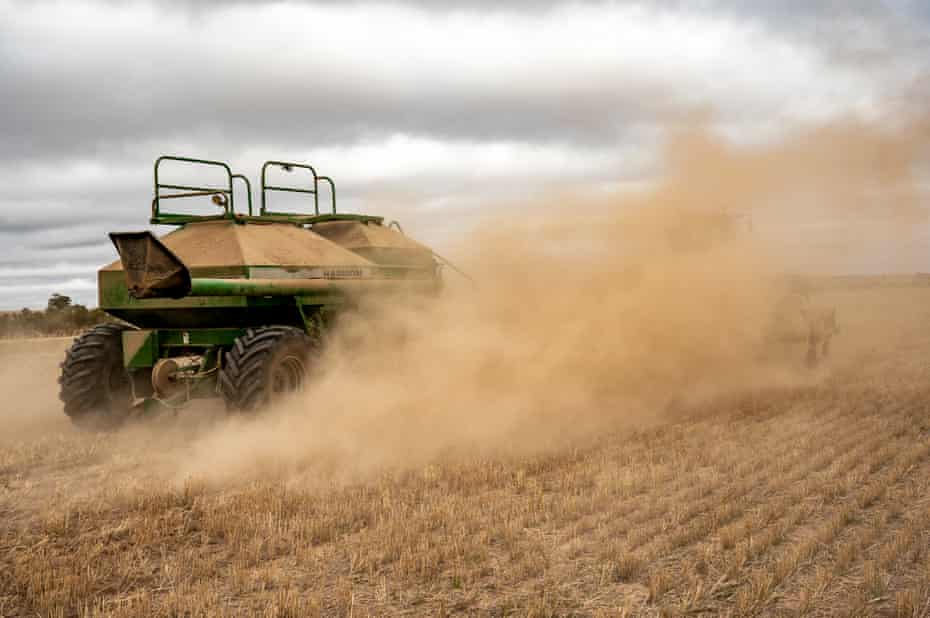
Supply chains are also increasingly demanding sustainable practices from their partners. The EU – a key buyer of WA canola – has endorsed a plan that could hit polluting exporters with new tariffs.
To the state agriculture minister, Alannah MacTiernan, the writing is on the wall.
“We’ve got to stop railing against where our customers are going and saying, ‘Yeah, OK, this is a legitimate concern’ … And, in the long run, it’s actually going to be good for us.”
Before its thumping election win in March, WA Labor promised $30m to help farmers adapt to climate change: $15m to the WA carbon farming strategy and land restoration program and a further $15m for a climate “resilience fund”.
“The goal is to change agriculture from being seen as a problem child and contributor to climate change … to becoming a large part of the solution,” MacTiernan says.
The WA Nationals had promised $100m for farmers to adjust to a low carbon future – a larger and more ambitious program that included support for “blue” carbon projects offshore.
“We felt that there needed to be significantly more funding to address that,” says the party’s leader, Mia Davies. “So whilst there’s been a good start, in terms of those conversations, I think it can be broadened.”
Calling for leadership
Internationally, Australia is under increasing pressure to commit to a net zero 2050 target after countries including the US and UK adopted similar targets, but clear leadership is lacking.
Federal Labor has adopted a net zero target – without exemptions – by 2050 and WA Labor has followed suit.

The prime minister, Scott Morrison, has said his preference is to reach carbon neutrality “as soon as possible and preferably by 2050”. But his government is yet to legislate the goal, instead focusing on “technology not taxes” and listing soil carbon as one of five priority areas.
In its “technology investment roadmap”, the government admits the cost of measuring soil carbon for projects under the emissions reduction fund – at $30 a hectare – remains prohibitive. This month the treasurer, Josh Frydenberg, announced that the 2021-22 budget would deliver $196.9m in new funding over four years to implement the national soil strategy – largely in research and education.
The federal Nationals leader, Michael McCormack, maintains that agriculture should be exempt from a target of zero emissions, should the government ever commit to one. But Mia Davies argues that the farming sector should be included.
“Our whole party, in fact, has addressed this at an organisational level, but also as a parliamentary perspective: we agree that we should be working towards carbon neutral or mitigating our impact towards 2050,” she says.
“I think if you’re excluding yourself from being a part of [the emissions targets], I think it leaves you out of the potential upsides.”
Others are also calling for leadership: “We fully support farmers in Western Australia aiming for net zero emissions by 2030,” says Fiona Davis, FCA’s interim chief executive.
“While farmers are a critical part of the solution to climate change, the federal government must also increase its emissions reduction commitments, in particular through the setting of a net zero emissions economy-wide goal.”
‘Slash-and-burn’ policy
The wheatbelt remains one of the most productive cereal-growing regions in the country. But CSIRO research suggests about 93% of the land – 13m hectares, an area roughly twice the landmass of Tasmania – was cleared of remnant vegetation between 1910 and 1968.
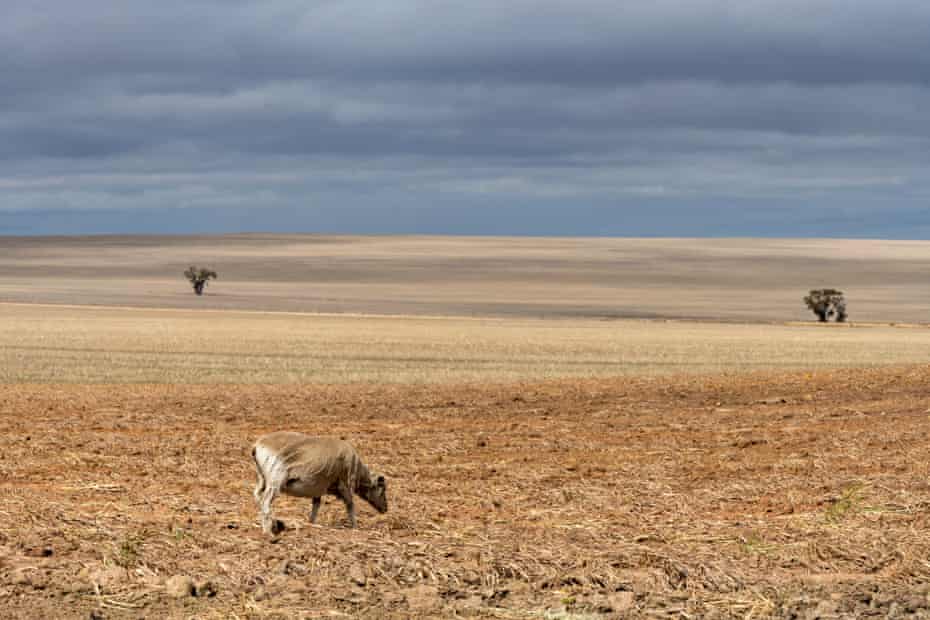
A 2013 study found that up to 52% of the decline in rainfall since the 1970s can be attributed to the lost tree cover.
Cindy says the slash-and-burn style of land management is “horrific”.
“It makes me feel sick,” she said. “My grandfather still remembers it … the government offered settlement blocks but the condition was you had to clear it. I mean, it’s government policy. Again, and again.”
Agricultural science has advanced a country mile in 100 years. And despite its moniker, the wheatbelt is no longer a vast monoculture, but a patchwork of different cereal crops, pasture for livestock and regrowth areas. But Simon concedes the sector remains conservative and the words “climate change” can be a conversation stopper.
“AgZero2030 is working hard to make [climate action] mainstream,” he says. “It’s not a ‘lefty’ issue; it’s safe.”
Cindy’s father, Don, lives on the neighbouring block. Initially he was sceptical about carbon neutral farming. So he has challenged the ideas using his version of the pub test: the local bowls club.
“Dad’s very conservative … he’s non-confrontational, so it’s not something he would normally do, but he does actually speak to his bowling mates,” Cindy says. “And he said there’s definitely a movement [towards] a lot more interest and acceptance.”
“[Farmers] used to be 80% ‘it’ll be right, there’ve always been dry times and wet times’ and 20% supportive. Now it’s more like 50:50.”


Average Rating